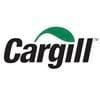Analysis of anti-Ascaridia galli antibody levels in egg yolk to detect parasite infection in commercial laying hens
Published: September 26, 2025
Source : T.H. DAO 1, P.W. HUNT 2, N. SHARMA 1, R.A. SWICK 1, S. BARZEGAR 1, B. HINE 2, J. MCNALLY 2, A. BELL 2 and I. RUHNKE 1 / 1 School of Environmental and Rural Science, University of New England, Australia; 2 CSIRO F.D. McMaster Laboratory, Armidale, NSW, Australia.
In recent years, in response to consumer concerns regarding welfare of birds, there has been a move from caged to free-range production systems. This change has resulted in increased exposure of hens to pathogens, including parasites, which can compromise the welfare of the animal (Wongrak et al., 2015). Amongst helminths, Ascaridia galli is the most abundant nematode in poultry, and can cause significant economic losses and negative impacts on bird health and welfare (Daş et al., 2010). Early detection of A. galli infection is important to allow effective treatment to be administered before irreparable damage occurs to the hosts’ intestines. However, the typical method of detecting A. galli infection is based on counting A. galli eggs in excreta samples and is only possible when the worms are mature (Martín‐Pacho et al., 2005). Meanwhile, alternative methods, such as serological tests, require collection of blood which is labour-intensive and more intrusive for the birds (Beck et al., 2003). Thus, the current study was undertaken to determine if anti-A. galli antibodies in egg yolks can be used to detect A. galli infection in layers, and to compare yolk antibodies from caged and freerange production systems.
Six eggs and pooled excreta samples were randomly collected from 3 caged, 2 barnhoused and 4 free-range flocks in Australia. All farms housed Isa Brown hens which were at least 60 weeks of age at the time of sampling. Eggs were processed to determine anti-A. galli antibody level in the egg yolks using an in-house ELISA assay. Excreta samples were assessed to determine numbers of worm eggs using standard procedures. Significant differences in egg yolk anti-A. galli antibody levels were observed in flocks within and between production systems. Free-range flocks had significantly higher egg yolk anti-A. galli antibody levels than did cage flocks (0.50 ± 0.08 versus 0.16 ± 0.03 OD units; P < 0.001). However, low levels of anti-A. galli antibodies were also detected in eggs obtained from some free-range flocks. The antibody level of barn-laid eggs was similar to that of the free-range eggs (0.49 ± 0.09 versus 0.50 ± 0.08 OD units). The results obtained from the excreta worm egg counting test confirmed that excreta samples from free-range and barn-housed flocks contained significantly higher numbers of A. galli eggs compared to samples from caged flocks. The average numbers of A. galli eggs per gram of excreta sample from caged, free-range and barn-house flocks were 0 ± 0, 750 ± 239 and 850 ± 600, respectively. However, the worm egg count did not correlate with the levels of anti-A. galli antibodies in the hen egg yolk (P > 0.05).
These findings suggest that analysis of anti-A. galli antibodies in the egg yolk is indicative of worm infections (past or present) in layer flocks.
Presented at the 29th Annual Australian Poultry Science Symposium 2018. For information on the latest and future editions, click here.
Beck JR, Swayne DE, Davison S, Casavant S & Gutierrez C (2003) Avian Dis. 47: 1196- 1199
Daş G, Kaufmann F, Abel H & Gauly M (2010) Vet. Parasitol. 170: 238-243.
Martín‐Pacho JR, Montoya MN, Arangüena T, Toro C, Morchón R, Marcos‐Atxutegi C & Simon F (2005) J. Vet. Med. 52: 238-242.
Wongrak K, Das G, Von Borstel UK & Gauly M (2015) Bri. Poult. Sci. 56: 15-21.
Content from the event:
Related topics:
Mentioned in this news release:



Show more
Recommend
Comment
Share

Would you like to discuss another topic? Create a new post to engage with experts in the community.














